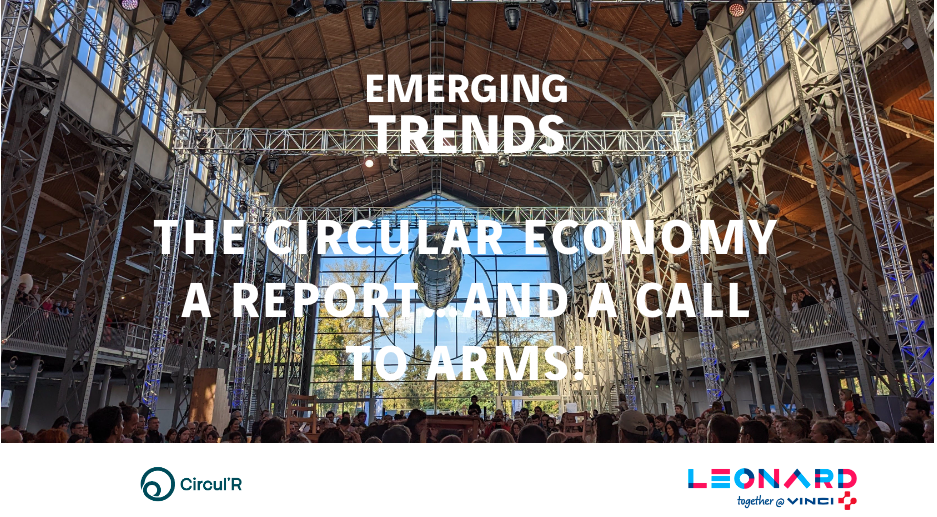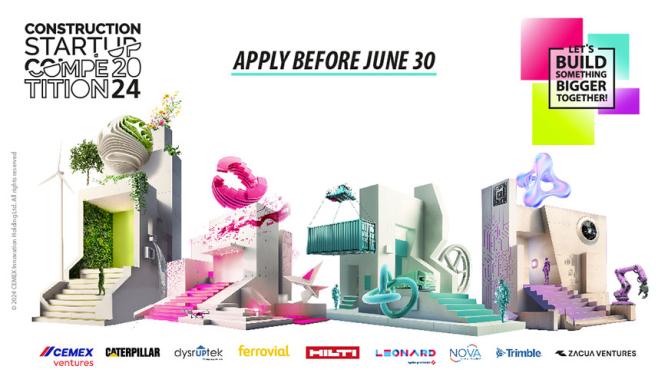Faced with the challenges of resource scarcity, soil preservation and CO2 emissions, of which the construction and maintenance of buildings are among the main emitters, Leonard and Circul’R explore in a new Emerging Trends three trends that could help establish an effective circular model for the sector: eco-design, re-use and recycling, and infrastructure as a service. It’s also an opportunity for the incubator to present cases that provide solutions in the VINCI ecosystem, such as Waste Marketplace, a start-up from Leonard’s Intrapreneurs program, a digital solution to simplify the management of waste from building sites and industrial sites, or Granulat+, the brand of VINCI Construction’s France Road Division, which gives a second life to mineral waste from industrial construction from a variety of sources.
Read the report online
A key role for eco-design
Ecodesign refers to all the design and production methods used to reduce the environmental impact of a product or service over its entire life cycle. Since 80% of a product’s impact is determined at the design stage**, a new approach to this first phase of life is essential. While eco-design was still in its infancy in 2022, it is becoming increasingly established in the building sector. Using this approach, players will succeed in limiting costs and environmental impacts, from the choice of materials right through to the end-of-life use of a building.
Implementing this system still poses a number of challenges for the construction industry, including higher purchasing and logistics costs, and the need to train teams. There are many environmental benefits to be gained from limiting waste and optimizing resource flows. They are also economic: designing construction projects that can have several lives maximizes the building’s profitability over time. It also minimizes risks: eco-design helps anticipate legislation, adapt buildings and infrastructures to climatic risks, and secure the supply of raw materials in times of crisis and inflation.
Reuse and recycling: two essentials
Reuse and recycling help save resources and reduce waste. With France producing over 40 million tonnes of waste a year, of which only 2% is hazardous waste, the construction industry is an ideal lever for reusing and recycling this waste. The company R.Used (VINCI Construction), an internal application of the VINCI Group, is a case in point. It has developed as a marketplace for reuse on building sites, and once again offers direct economic and environmental benefits.
Thanks to a number of legislative initiatives such as Extended Producer Responsibility (EPR) for Building Products and Materials in the construction sector, reuse and recycling are increasingly seen as sustainable, efficient and reliable solutions. At a time when inflation is hitting the construction sector hard, reuse is presenting itself as an alternative to extracting and importing virgin raw materials, and to landfilling waste. Recycling, on the other hand, enables better waste management on construction sites.
A booming innovative model: infrastructure as a service
IaaS, or “infrastructure as a service”, is an economy of functionality model that promotes the application of various circular strategies throughout the lifetime of the infrastructure.
This model has the advantage of maximizing the profitability of short-term infrastructure projects, thanks to the use of high-quality, durable materials that are easily replaceable and low-maintenance, minimize maintenance costs, and can be resold at full price or reused at the end of their useful life. It will also minimize a building’s environmental impact, by minimizing resource and energy consumption. Mainly suited to relatively short projects, IaaS favors the implementation of short circular economy loops, as well as the design of reversible projects.
Three major challenges to be met to achieve greater circularity
Leonard identifies three main challenges to achieving greater circularity. Firstly, overcoming the systemic inertia of the industrial sector, with changes in industrial processes and procedures taking a long time to implement, both in practice and in people’s minds. It will also be a question of successfully adapting to international differences, with the speed of integration of circular principles and concepts still heterogeneous. Lastly, circularity suffers from a short-termist vision, and overcoming it will enable us to implement innovation and reap its benefits.


